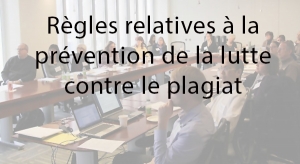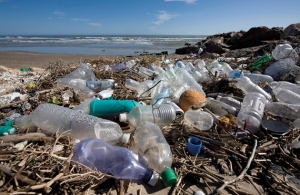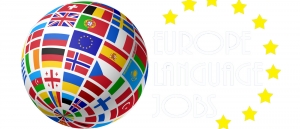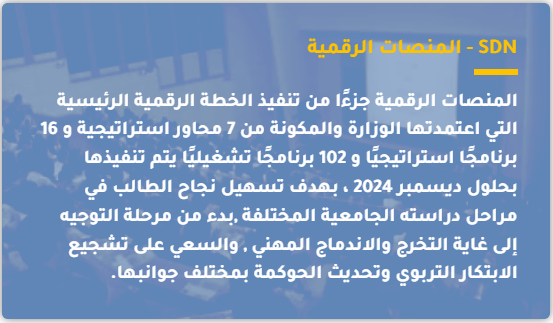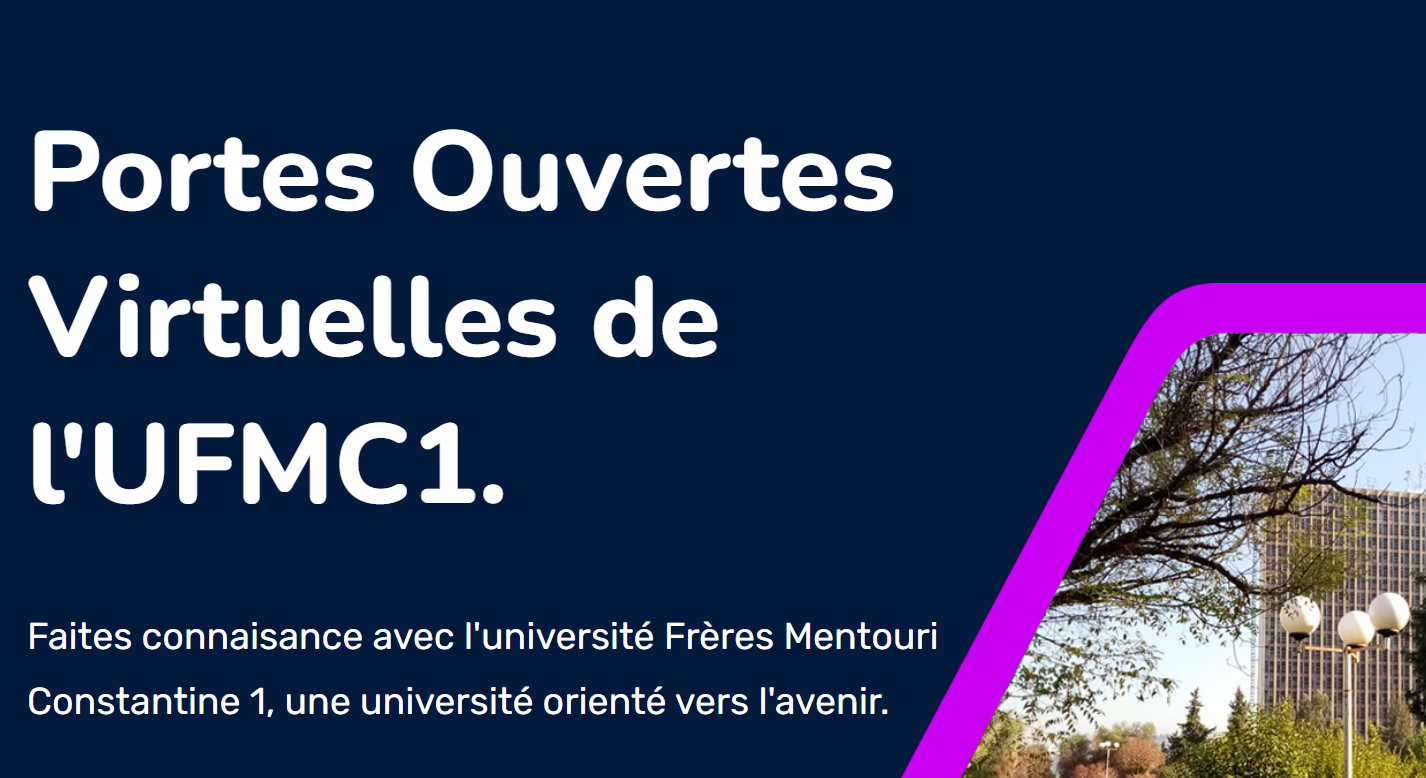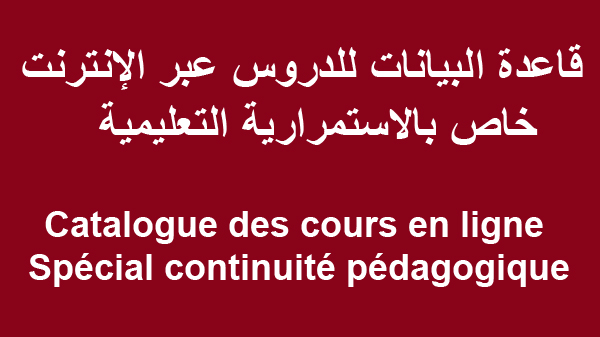Un Mot pour Expliquer L'arrêté-n°933 du 28 juillet 2016 fixant-les règles relatives à la prévention et la lutte contre le plagiat
Prévention et lutte contre le plagiat
Préambule :
Le plagiat est un problème auquel sont confrontées la plupart des universités et des institutions de recherche scientifiques de tous les pays. D'une manière simplifiée, le plagiat consiste à reproduire intégralement ou partiellement un texte, des données, des graphiques, des images ou des idées originales d'autrui sans citer leurs auteurs et ce, dans le but de les faire passer pour siens. La disponibilité et la multiplication des moyens permettant l'accès aisé aux données numériques disponibles sur le web, a contribué à la prolifération de ce fléau et en contrepartie, au développement d'outils de détection de plagiats de plus en plus performants, ce qui facilite ka découverte de cas de plagiats commis même depuis plusieurs années, voire plusieurs décennies. Si la communauté universitaire avec principalement sa composante étudiante et à un moindre degré sa composante enseignante est très affectée par ce fléau, la presse rapporte fréquemment des soupçons de plagiat ou de cas de plagiat avéré, commis par des personnalités du monde de la musique [1-2], de l'audiovisuel [3-4] et même de la politique [5-7]. A titre d'exemple, en 2012 Pal Schmitt le président Hongrois en exercice à l'époque a dû démissionner de son poste suite à son accusation d'avoir plagié une partie de sa thèse de doctorat soutenue il y avait une vingtaine d'années avant [7] ; en 2011 le ministre de la défense allemand Karl-Theodor zu-Guttenberg a dû également démissionner de son poste suite à son accusation d'avoir plagié partiellement sa thèse de doctorat soutenue en 2007 [6]. Ces deux exemples montrent d'une part qu'un plagiaire sera tôt ou tard débusqué, et d'autre part, en plus de l'annulation de son diplôme ayant été obtenu grâce à ce plagiat, que les conséquences sur sa carrière sont souvent désastreuses.
Pour endiguer ce fléau qui peut entacher sérieusement la notoriété de tout diplôme délivré par une institution académique et/ou de recherche nationale, le ministère de l' enseignement supérieur et de la recherche scientifique (MERS) a promulgué récemment un arrêté qui définit le plagiat et fixe les règles relatives à la prévention du plagiat ainsi que les sanctions qu'encoure tout plagiaire (arrêté 933 du 28 Juillet 2016) [8].
Définition du plagiat :
Le mot « plagiat » désigne un vol littéraire d'une oeuvre ou de certaines de ses parties et de les présenter comme siennes. Ainsi sont considérés comme actes de plagiat les agissements suivants :
Recopier textuellement ou partiellement (ne serait-ce que quelques lignes) un texte, un paragraphe, extrait d'un article publié par autrui dans un ouvrage, un magazine, un rapport ou dans tout document trouvé sur internet pour l'utiliser dans son propre travail sans le mettre entre guillemets et sans la mention de ses sources et/ou la citation des auteurs originaux.
Reformulation en utilisant ses propres mots et son propre style, des idées ou de textes complets ou partiels publiés par autrui pour les utiliser dans son propre travail sans la mention de ses sources et la citation des auteurs originaux.
Publication d'un texte, article, polycopié ou rapport réalisé par quelqu'un d'autre et le présenter comme étant sien, et ce même si l'auteur original a donné son accord gracieusement ou contre rémunération.
Utilisation et insertion dans son propre texte, d'images, de cartes géographiques, de courbes graphiques, de tableaux de données, de schémas produits par autrui en omettant de faire référence à ses sources et/ou la citation de leurs auteurs.
Utilisation dans son travail propre de données obtenues par autrui sans préciser leurs provenances et leurs auteurs. Utilisation dans son travail propre d'idées originales et/ou d'arguments développés par autrui en omettant de citer convenablement leurs auteurs.
Traduction complète ou partielle d'un texte ou de tout travail rédigé dans une langue et publié par autrui, vers une autre langue en omettant de mentionner les auteurs originaux dans la langue source. Réutilisation intégrale ou dans une proportion importante d'un travail rédigé et publié auparavant par soi-même chez un éditeur pour le publier une autre fois dans un autre ouvrage ou revue. Ce genre d'agissement appelé autoplagiat est condamnable autant qu'un plagiat.
Réutilisation intégrale ou dans une grande proportion d'un travail de type comptes rendus, rapports, mémoire de licence, mémoire de master, mémoire de magister ou thèse de doctorat, rédigé auparavant par soi-même et qui avait permis l'obtention d'un diplôme ou autre, pour l'obtention d'un autre diplôme ou autre (autoplagiat).
Sanctions à l'encontre d'un acte de plagiat :
Les conséquences d'un acte de plagiat sont désastreuses aussi bien pour le devenir de tout étudiant incriminé et ce, quelque soit son niveau d'étude, que pour la carrière de tout enseignant-chercheur, enseignant chercheur hospitalo-universitaires et chercheur permanent incriminé et ce, quelque soit son grade et/ou le poste de travail qu'il occupe au moment de la découverte du plagiat. Comme ceci a été mentionné dans les exemples relatés dans le préambule, un acte de plagiat peut détruire sérieusement la notoriété et la carrière de son auteur même si son acte a été commis des décennies avant sa révélation au grand jour.
Cas des étudiants :
- L'article 35 de l'arrêté 933 du 28 Juillet 2016 stipule que « tout acte de plagiat ayant un rapport avec les travaux scientifiques et pédagogiques requis à l'étudiant dans les mémoires de licence, de master, de magistère et thèses de doctorat, avant ou après sa soutenance, expose son auteur à l'annulation de la soutenance ou au retrait du titre acquis » [8]. Le retrait du titre acquis peut se faire même si l'acte de plagiat n'a été débusqué que plusieurs années après son acquisition. Dans ce cas, « toute personne ayant subi des dommages par le fait du plagiat dument constaté, peut instruire en justice les auteurs du plagiat » [8] et ce, indépendamment des sanctions prises à leur encontre par les instances de leur organisme employeur.
- Un autoplagiat dans un travail mené en vue de l'obtention d'un diplôme, peut entrainer selon son importance, à l'annulation de ce travail, son auteur peut recevoir un refus pour la soutenance de son mémoire ou de sa thèse, il peut se voir retirer son titre ou diplôme acquis si l'autoplagiat a été révélé une fois le titre obtenu.
- Si le plagiat ou l'autoplagiat concerne un travail mené durant un cursus de formation (comme les comptes rendus de travaux pratiques, les rapports d'exposés, les rapports destage, ...), son auteur verra son travail refusé, une note zéro peut lui être discernée pour ce travail, des mesures disciplinaires allant jusqu'à l'exclusion peuvent être prononcées à son encontre.
Cas des enseignants et chercheurs permanents :
Le décret exécutif n° 08-130 du 3 mai 2008 relatif au statut particulier de l'enseignant chercheur, chapitre 8, article 24, classifie "comme faute professionnelle de quatrième degré, le fait pour les enseignants chercheurs, d'être auteurs ou complices de tout acte établi de plagiat, de falsification de résultats ou de fraude dans les travaux scientifiques revendiqués dans les thèses de doctorat ou dans le cadre de toutes autres publications scientifiques ou pédagogiques" [9].
L'article 36 de l'arrêté 933 du 28 Juillet 2016 stipule que « tout acte de plagiat [...] en relation avec les travaux scientifiques et pédagogiques revendiqués par l'enseignant chercheur, l'enseignant chercheur hospitalo-universitaire et le chercheur permanent lors des activités pédagogiques et scientifiques, les mémoires de magister et les thèses de doctorats et autres projets de recherche ou travaux d'habilitation universitaire, ou toute autre publication scientifique ou pédagogique dument constaté, pendant ou après la soutenance, l'évaluation ou la publication, expose son auteur à l'annulation de la soutenance ou au retrait du titre acquis ou à l'annulation ou au retrait de la publication » [8].
L'auteur du plagiat peut se voir retirer son titre et diplômes acquis par le biais du plagiat, dégradé, expulsé voir radié des fonctions qu'il occupe. Il peut éventuellement faire face à des poursuites judiciaires de la part des auteurs originaux de l'oeuvre plagiée.
Quelques moyens de lutte contre le plagiat :
Sensibilisation de toute la communauté universitaire sur les méfaits et les conséquences du plagiat en intégrant dans le cursus des enseignements des séminaires et/ou matières sur l'éthique et la déontologie et notamment sur l'aspect plagiat.
Mise en ligne des travaux (mémoires, thèses, publications, ...) réalisés au sein de l'institution universitaire et/ou de recherche. Etablir une charte anti-plagiat au niveau des institutions universitaire et/ou de recherche.
Instaurer pour les mémoires et thèses un engagement à faire signer par leur auteur stipulant que leur travail ne comporte pas de plagiat et que leurs sources ont été convenablement citées. Utilisation de logiciels de détection de plagiat.
Ce type de logiciels peut être trouvé sur le web en libre-service (Palgium, Plagscan, Plagiarisma,...) ou payant (Turnitin, Compilatio, ...). Cependant, les outils de vérification de plagiat gratuit restent souvent limités au traitement d'un court texte et ne sont pas adaptés pour un important nombre de pages, ce qui est souvent n'est pas le cas pour les logiciels payant.
Quelques sites de logiciels anti-plaqiat gratuits :
http://www.plagium.com/fr/detecteurdeplagiat
Quelques conseils simples pour ne pas tomber dans le plagiat :
Citer les auteurs originaux de toute idée qui vous leurs empruntez pour développer vos propres travaux.
Placer entre guillemets toute phrase ou paragraphe que vous recopiez textuellement de la littérature pour l'utiliser dans votre travail en prenant soin de citer convenablement son ou ses auteurs. Il faut s'assurer que la proportion des textes empruntés textuellement ou partiellement de la littérature ne doit constituer qu'une part insignifiante en comparaison de la proportion de votre contribution propre à ce travail.
- Citer convenablement vos sources lorsque vous reformulez dans vos propres mots un texte ou une idée publiés par autrui.
Ne réutiliser jamais un même travail (compte rendu, rapports, mémoire de fin d'études, mémoire de magister, thèse de doctorat) que vous aviez auparavant rédigé vous-même et qui vous avait permis d'obtenir une note dans une matière et/ou que vous aviez soutenu pour obtenir un diplôme (licence, master, ingénieur, magister, doctorat), pour l'obtention d'une note dans une autre matière et/ou pour l'obtention d'un autre diplôme (autoplagiat).
Quand vous avez besoin d'utiliser des données publiées par d'autres auteurs pour développer ou illustrer un travail que vous avez mené vous-même, pour le publier il faut au préalable obtenir l'autorisation d'utilisation de ces données de leurs auteurs originaux et/ou des éditeurs, sans oublier de citer vos sources et de mentionner si nécessaire l'autorisation obtenue.
Référence :
[1] http://www.lemonde.fr/cultur&article/2015/04/07/rai
[2] http://www.lefigaro.fr/musique/2015/12/08/03006-20151208ARTFIG00039
[3] http://archives-lopost.huffingtonpost.fr/article/2011/01/04/2359069
[4] http://www.lexpress.fr/culture/livre/plaqiat
[5] http://www.20minutes.fr/monde/672397-20110217
[6] http://www.slate.fr/lien/59825/hommes-politioues-accuses-plaoiat
[7] http://www.lefigaro.fr/internationa1/2012/04/02/01003-20120402ARTFIG00639
[8] http://www.umc.edu.dz/index.php/component/k2/item/1130-prevention-et-lutte-contre-le-plaolat
[9] httpsillservices.mesrs.dz/DEJA/fichiers sommaire des textes/137%20FR.PDF
CAREERS Degrees of success
An MBA can unlock progress to the higher ranks of a
company — and many firms are willing to pay for one.
PLASTIC OCEAN
SCIENTISTS KNOW THAT THERE IS A COLOSSAL AMOUNT OF PLASTIC IN THE OCEANS. BUT THEY DON’T
KNOW WHERE IT ALL IS, WHAT IT LOOKS LIKE OR WHAT DAMAGE IT DOES.
Kamilo beach, on the tip of Hawaii’s Big Island, is a remote tropical shore. It has white sand, powerful waves and cannot be reached by road. It has, in fact, much that an idyllic tropical beach should have. But there is one inescapable issue: it is regularly carpeted with plastic. Related stories Man-made pollutants found in Earth's deepest ocean trenches Plastic waste taints the ocean floors Fate of ocean plastic remains a mystery Bottles, fishing nets, ropes, shoes and toothbrushes are among the tons of waste washed up here, thanks to a combination of ocean currents and local eddies. A study in 2011 reported that the top sand layer could be up to 30% plastic by weight1. It has been called the dirtiest beach in the world, and is a startling and visible demonstration of how much plastic detritus humanity has dumped into the world’s oceans. From Arctic to Antarctic, from surface to sediment, in every marine environment where scientists have looked, they have found plastic. Other human-generated debris rots or rusts away, but plastics can persist for years, killing animals, polluting the environment and blighting coastlines. By some estimates, plastics comprise 50–80% of the litter in the oceans. “There are places where you don’t find plastic,” says Kara Lavender Law, an oceanographer at the Sea Education Association in Woods Hole, Massachusetts. “But in terms of the different marine reservoirs, we’ve found plastic in all of them. We know it’s pervasive.” Newspapers tell stories of the ‘Great Pacific garbage patch’, a region of the central Pacific where plastic particles accumulate, and volunteers participate in beach clean-ups across the globe. But in many ways, research lags behind public concern. Scientists are still struggling to answer the most basic questions: how much plastic is in the oceans, where, in what form and what harm it’s doing. That’s because science at sea is hard, expensive and time-consuming. It is difficult to comprehensively survey vast oceans for small — sometimes microscopic — plastic fragments, and few researchers have made this their line of work. Classify plastic waste as hazardous But now interest is picking up. “There have been more publications in the last four years than the previous four decades,” says Marcus Eriksen, director of research and co-founder of the 5 Gyres Institute in Santa Monica, California, which works to fight plastic pollution. Scientists and environmentalists know that there is a lot to do. Last May, the United Nations Environment Programme (UNEP) passed a resolution at its Nairobi meeting, stating that “the presence of plastic litter and microplastics in the marine environment is a rapidly increasing serious issue of global concern that needs an urgent global response”. Where does it come from? In 2014, a team at the US marine park Papahānaumokuākea, off the northwest coast of Hawaii, removed a fishing net from the reserve that weighed 11.5 tonnes — roughly equivalent to a London bus. Nets and other fishing equipment that have been lost or discarded at sea are thought to make up a large fraction of marine plastic. An estimate2 from UNEP suggests that this ‘ghost’ fishing gear makes up 10% of all marine litter, or around 640,000 tonnes. There is much more than that. Global production of plastics rises every year — it is now up to around 300 million tonnes — and much of it eventually ends up in the ocean. Plastic litter is left on beaches, and plastic bags blow into the sea. The vast quantities of plastics dumped as landfill can, if sites are not properly managed, easily wash or blow away. Some sources are less obvious: as tyres wear down, they leave tiny fragments on roads that leach into drains and on into the ocean. In a 2014 paper, Eriksen and his team analysed data on the items found in a series of expeditions across the world’s oceans and estimated that 87% by weight of floating plastic was greater than 4.75 millimetres in size3. The list included buoys, lines, nets, buckets, bottles and bags (see ‘A sea of plastic’). But when the pieces were counted instead of weighed, large plastics made up just 7% of the total. Many plastic items break down under the onslaught of sunlight and waves until they eventually reach microscopic sizes, and other plastics are small from the start, such as the ‘microbeads’ that are added to face scrubs and other cosmetic products, and that go down the drain. Concern about these microplastics has been growing ever since 2004, when Richard Thompson, who researches ocean plastic at Plymouth University in the United Kingdom, coined the term. (It is now often used to refer to pieces less than 5 millimetres across.) His team found microplastics in most of the samples it took from 18 British beaches, as well as in plankton samples collected from the North Sea as far back as the 1960s4. Since then, the number of papers using the term has rocketed, and researchers are attempting to answer questions ranging from how toxic the materials are, to how they are distributed around the world. How much is out there? If surveying the ocean for plastic is expensive and difficult at the surface, it’s even harder below it: researchers lack samples from enormous areas of the deep sea that have never been explored. And even if they could survey all these regions, the concentration is typically so dilute that they would have to test huge volumes of water to get reliable results. Instead, they are forced to estimate and extrapolate. In a paper published last year, a team led by Jenna Jambeck, who researches waste management at the University of Georgia in Athens, estimated how much waste coastal countries and territories generate, and how much of that could be plastic that ends up in the ocean5. The group reached a figure of 4.8 million to 12.7 million tonnes every year — very roughly equivalent to 500 billion plastic drinks bottles. But her estimate excluded the plastic that gets lost or dumped at sea, and all the plastic that is already there. To get a handle on this, some researchers have gone trawling, using fine-meshed nets to see what plastic they can catch. Last year, oceanographer Erik van Sebille of Imperial College London and his colleagues published one of the largest collections of such data6. They combined information from 11,854 individual trawls, from every ocean except the Arctic, to produce a ‘global inventory’ of small plastic pieces floating at or near the surface. They estimated that, in 2014, there were between 15 trillion and 51 trillion pieces of microplastic floating in the oceans, with a total weight of 93,000 to 236,000 tonnes. But these numbers present scientists with a problem. This estimate of total surface plastic is just a small fraction of what Jambeck estimated entered the ocean every year. So where is all the rest? “That’s the big question,” says Jambeck. “That’s a tough one.” Researchers are trying to find answers. Jambeck is now working with a mobile-phone app called the Marine Debris Tracker, which offers a way to crowdsource vast amounts of data as users send in information about rubbish they encounter. She is also working on a project for UNEP to build a global database of marine-litter projects. Where is it? The mismatch between the estimated amount of plastic entering the oceans and the amount actually observed has come to be known as the ‘missing plastic’ problem. Adding to the puzzle, data from some locations do not show a clear increase in plastic concentrations over recent years, even though global production of the materials is soaring. Public attention has focused on the Great Pacific garbage patch, where plastics collect thanks to an ocean current called a gyre. The name is something of a misnomer — visitors to the patch would not find piles of seaborne rubbish. A study from 2001 reported 334,271 pieces of plastic per square kilometre in the gyre7. This is the largest tally recorded in the Pacific Ocean, but still works out as roughly one small fragment for every three square metres. Modelling by van Sebille and his colleagues suggest that concentrations could be several orders of magnitude higher in the Pacific garbage patch, and an equivalent zone in the North Atlantic, than elsewhere. But the plastic here is accounted for in surveys, whereas the missing plastic is, by definition, missing and therefore somewhere else. Some of it is probably on the sea floor. Certain types of plastic sink, and even ones that start out floating can eventually become covered with marine organisms and be pulled down. Work from Thompson has shown microplastics in deep-ocean sediment — an under-studied zone that could be hiding some of the missing millions of tonnes8. Remotely operated vehicles also regularly find large plastic items among the litter that has sunk into the deepest ocean trenches. A substantial portion of ocean plastic may simply end up on shorelines, and other plastic ‘sinks’ are uncovered all the time. In 2014, Thompson co-authored a paper showing that microplastics had accumulated in Arctic sea ice at concentrations several orders of magnitude greater than that found even in highly contaminated surface waters9. “We have a lot of educated guesses” about where the missing plastic is, says Law. “In my mind, we don’t have the answer to that.” Thompson and others are now looking beyond microplastics to nanoplastics — ones less than 100 nanometres in size. “Nano-sized particles of plastic are being manufactured,” says Thompson. “So it’s highly likely that some will escape into the environment. There’s also the fragmentation of larger items.” But nanoplastics are proving hard to study. Researchers commonly use a type of spectroscopy to confirm whether fragments recovered from the sea are made of plastic, but the method does not work well on pieces below about 10 micrometres, Thompson says. He hopes to learn more as part of a UK-government-funded project called RealRiskNano, which will look at sources and pathways to the environment for these tiny fragments. “It wouldn’t surprise me to find they do exist. But at the moment it’s below the level of detection from an environmental sample.” What harm does it do? Researchers know that marine plastic can harm animals. Ghost fishing gear has trapped and killed hundreds of animal species, from turtles to seals to birds. Many organisms also swallow pieces of plastic, which can accumulate in their digestive system. According to one often-quoted figure, around 90% of seabirds called fulmars washed ashore dead in the North Sea had plastic in their guts. What’s less clear is whether this pollution has major impacts on populations. “We’ve got to stop it in the treatment plants. In the landfills. That is the point to intervene.” Lab studies have demonstrated the toxicity of microplastics, but these often use concentrations that are much higher than those found in the oceans. In February this year, though, Arnaud Huvet, who studies invertebrates at France’s national marine research agency (Ifremer) in Plouzané, published work in which he exposed Pacific oysters to microplastics at concentrations similar to those found in the sediment where the creatures live. Animals in the plastic-laced water had poorer-quality eggs and sperm and produced 41% fewer larvae than did those in a control group10. It was one of the first studies to show a direct link between plastic and fertility problems. “That made an impact,” van Sebille says. So did a study in June from fish ecologists Oona Lönnstedt and Peter Eklöv, in which they exposed perch larvae to ‘environmentally relevant’ concentrations of microplastics. The larvae ate the plastics — they even seemed to prefer them to actual food — which made them grow more slowly and fail to respond to the odour of predators. After 24 hours in a tank with a predator, 34% of plastic-dosed larvae survived, compared with 46% of those raised in clean water11. Lönnstedt, at Uppsala University in Sweden, was disturbed by photos of the transparent larvae clearly showing the small plastic spheres in their guts. “It’s awful, so of course I feel strongly about it,” she says. “People who say plastics won’t be an issue in the oceans need to take a look at the evidence again.” But some scientists question the implications of the work. Alastair Grant, an ecologist at the University of East Anglia in Norwich, UK, says that the levels of plastic that gave adverse effects in Lönnstedt’s paper — 10–80 particles per litre — are still orders of magnitude higher than the vast majority of field measurements. Most reports are less than 1 particle per litre, he says. “The evidence I can see at the moment suggests microplastics are probably within safe environmental limits in most places.” What should we do? Despite the lack of comprehensive data about ocean plastics, there is a broad consensus among researchers that humanity should not wait for more evidence before taking action. Then the question becomes, how? One controversial project has been devised by The Ocean Cleanup, a non-profit group that by 2020 hopes to deploy a 100-kilometre-long floating barrier in the Great Pacific garbage patch. The group claims that the barrier will remove half of the surface plastic there. But the project has met with scepticism from researchers. They say that plastic in the gyre is so dilute that it will be tough to scoop up, and they worry that the barrier will disturb fish populations and plankton. Boyan Slat, chief executive of The Ocean Cleanup, welcomes the criticism, but says that the barrier project is still in an early phase, with a prototype currently deployed off the Dutch coast. “We’re using this test as a platform to investigate whether there’s any negative consequences. The only way to find out is to go out and do it,” he says. In a paper published earlier this year12, van Sebille and his colleague Peter Sherman showed that it would be much more effective to place clean-up equipment near the coasts of China and Indonesia, where much of the plastic pollution originates. “The closer to the plastic economy loop you intervene the better it is,” van Sebille says. “We’ve got to stop it in the treatment plants, in the landfills. That is the point to intervene.” Eriksen likens the situation to addressing air pollution, where people have long realized that filtering the air is not a long-term solution. Filtering the oceans seems similarly implausible, he says. “What we’ve seen worldwide is you go to the source.” That means reducing the use of plastic, improving waste management and recycling the materials to stop them from reaching the water at all. That’s a lot to ask, considering how ubiquitous plastics are. But some scientists allow themselves to imagine a world where plastics have been brought under control. According to research by Law and Jan van Franeker, some types of floating plastic might disappear in just a few years13. Perhaps even Kamilo beach would eventually return to its unpolluted form. But plastic will have left its mark, as layers of tiny particles embedded in sediment on the ocean floor. Over time, this plastic will become cemented into Earth — a legacy of the plastic era. “There will be this layer of rock around the world that is going to be plastic,” Eriksen says.
Languages for Jobs Providing multilingual communication skills for the labour market
Languages for the Future Which languages the UK needs most and why
Which languages the UK needs most and why
November 2013


